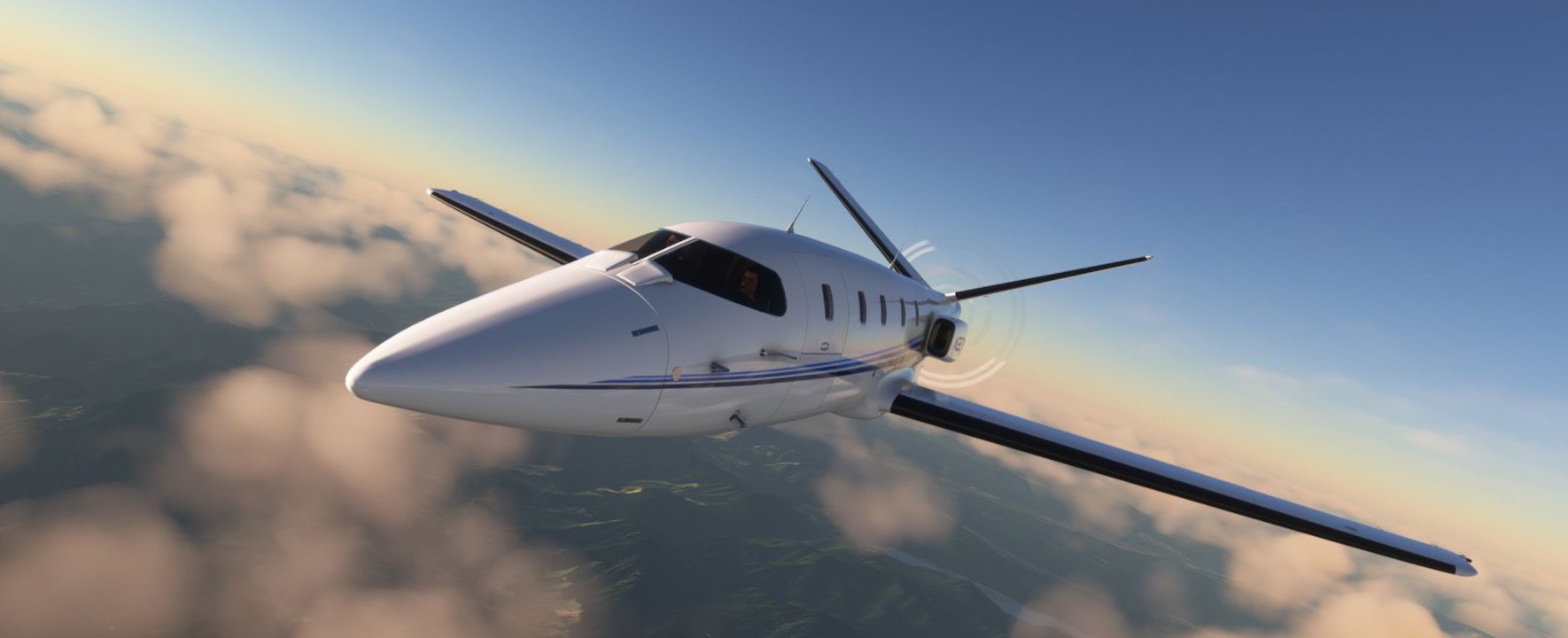– MSFS 2024 Crossover
– Adjustments to Instruments (Screens) to function in MSFS 2024 properly
Bill Lear envisioned the sleek design to be made entirely of Carbon Fiber, which was a radical concept back in the day, but is now common in the aircraft market now, including the military sector who made the futuristic B2 Flying Wing entirely of Carbon Fiber also.
The design that Bill Lear set out to make featured twin jet turbines that were connected to a 2-to-1 transmission system via drive shafts, which went to the propellor. The idea was that if a turbine failed, the plane had a secondary. The FAA didnt approve of the system, but yet oddly, this same system is featured on helicopters, a failsafe backup system for a single rotor using 2 jet engines.
The original design of the LearFan featured 7 seats total, 2 of them being the crew up front. The range of the LF2100 was just under 1800 Nautical Miles and had a maximum speed of 390 Knots TAS at high altitude, and at cruise, she would do 280 Knots TAS nicely and yield a low burn rate of fuel for the projected 1780 NM range. Ceiling of the sleek LearFan was 40,000 feet.
The LearFan was to be built in Ireland as England was seeking to bring in industry for the people of that Land and were offering incentives and investment to companies interested in building in Ireland. Another such company was the famous DeLorean car company, making their cars also in Ireland.
These are some of the nice features of the LearFan 2200 modern ‘Ultimate’ single-jet Turboprop. I sought to make the LearFan as close to original on the outside as possible, but I then went bananas on the interior with a very nice, ultra modern cabin, ranging from nice leather seating and carpet, to beautiful wood veneer and brushed metal trim. Even the instrument panel gets first rate treatment with wood veneer, making it more like a luxury, high end Euro-car style interior. This is a classic Executive concept taken to the max for this class of single engine, 6 passenger turboprop aircraft.
Instruments Features:
• Asobo award winning AS3X Avionics ‘touch screen’ Suite complete with mini TSC screens for radios and Avionics
• Emergency AUX gauges
• Autopilot System as like the Beech KingAir
• Fully adjustable dimming knobs for internal lighting systems
• Defrosting window when under icing conditions
Exterior Features:
• 8 different exterior Paint schemes in 4K resolution
• 6 different color themes of cabin colors Extreme mini details inside and out
• High detail fuel hoses that link up to the Asobo MSFS fuel delivery truck
• Electrical ‘charge’ cable link that ties into the Ground Power Unit truck
• The LearFan LF-2200 has beautiful, high detail legs (Landing Gear) and nicely detailed gear stowage bays made in carbonfiber
Added Features:
• Famous Asobo Rain Effects on the windshield
• perspex for high realism rainy day flights
• Plexiglass has small, fine scratches and scuffs for a nice touch of realism
• Park Mode which adds wheel chocks and intakes / scoops plug covers
• Luggage Mode which adds 2 sets of luggage, waiting to be loaded aboard or picked up
• Sun Shades ‘up and closed’ mode for when your plane is parked for a long duration outside in the elements

